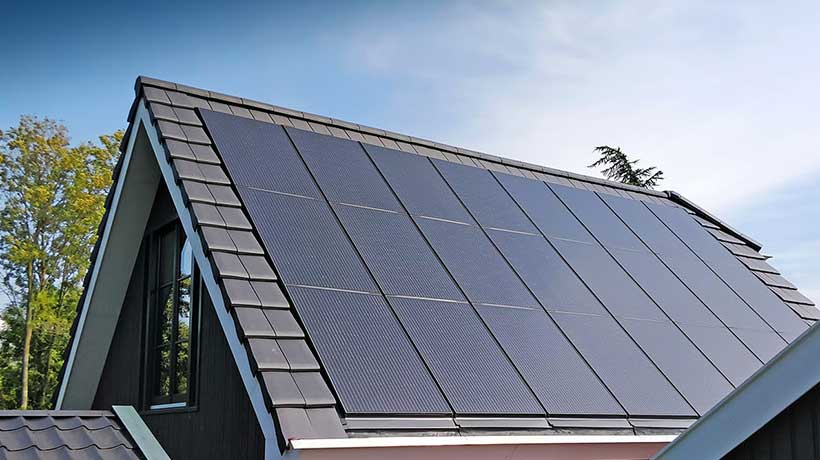Solar photovoltaic (PV) roof tiles have emerged as a pioneering innovation in the realm of renewable energy solutions. These tiles, a testament to technological ingenuity, offer a transformative approach to power generation by seamlessly integrating solar energy-capturing capabilities within the very structure of residential rooftops. This article aims to delve deeper into the evolution, functionalities, advantages, and future prospects of solar PV roof tiles.
Evolution of Solar PV Roof Tiles
The inception of solar PV roof tiles can be traced back to the quest for more discreet and aesthetically pleasing solar solutions. Early solar panels were bulky and installed separately from roofing materials, which hindered widespread adoption due to their conspicuous appearance. However, the development of solar PV roof tiles marked a significant shift. Engineers and innovators began crafting tiles embedded with solar cells, ensuring a seamless integration into various architectural designs while harnessing solar energy efficiently.
Innovative Functionalities
Solar PV roof tiles are designed to perform like conventional roofing materials while generating electricity from sunlight. These tiles come in various shapes, sizes, and colors, allowing for customization to match different architectural styles. They function by absorbing sunlight through embedded photovoltaic cells, converting it into usable electrical energy for household consumption or storage in batteries.
Moreover, these tiles boast robustness and durability, engineered to withstand harsh weather conditions and ensure longevity. Their design facilitates easy installation, providing homeowners with a hassle-free transition to sustainable energy solutions.
Advantages of Solar PV Roof Tiles
Aesthetic Integration
One of the standout features of solar PV roof tiles is their seamless integration with the existing architecture of homes. These tiles mimic traditional roofing materials, offering a visually appealing solution that complements the overall design without compromising on efficiency.
Efficiency and Energy Savings
Solar PV roof tiles contribute to energy efficiency by utilizing renewable solar power. They enable homeowners to generate clean electricity, reducing reliance on conventional power sources and ultimately leading to long-term cost savings on energy bills.
Space Utilization and Versatility
The versatility of solar PV roof tiles allows for installation on various roof types and sizes. This adaptability is beneficial, especially for urban areas or residences with limited roof space, as it optimizes the utilization of available surface area for solar energy generation.
Environmental Impact and Sustainability
By harnessing solar energy, these tiles significantly reduce carbon footprints, playing a pivotal role in mitigating environmental degradation and fostering a more sustainable future.
Future Prospects and Considerations
As with any innovative technology, the adoption of solar PV roof tiles faces considerations. The initial installation cost might pose a barrier for some homeowners, although long-term savings on energy bills can offset this investment. Continued advancements in manufacturing processes and increased market demand may drive down costs, making these tiles more accessible.
Looking ahead, the evolution of solar PV roof tiles holds promise. Ongoing research and development aim to enhance efficiency, durability, and affordability, further solidifying their position as a mainstream solution for residential energy generation.
In conclusion, solar PV roof tiles represent a remarkable convergence of functionality and aesthetics in the realm of sustainable energy solutions. Their evolution signifies a stride toward a more environmentally conscious future, where homes seamlessly integrate renewable energy generation into their very structure. As technology progresses and economies of scale are achieved, solar PV roof tiles are poised to play an increasingly integral role in shaping the landscape of residential energy production.
